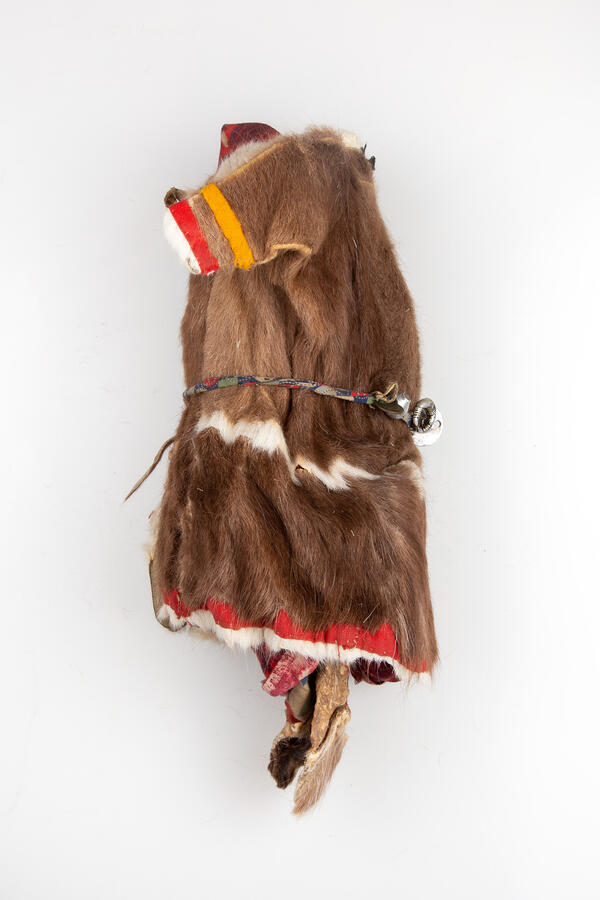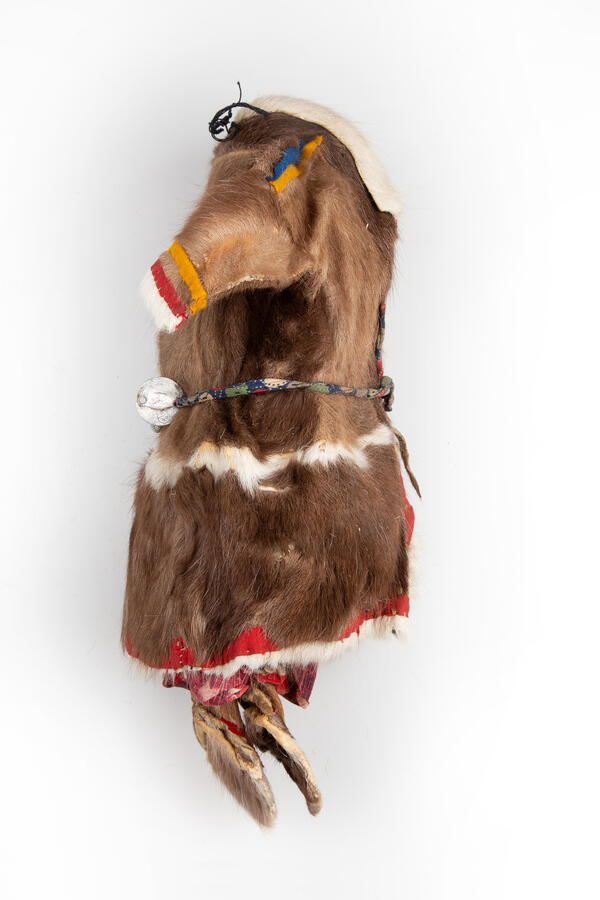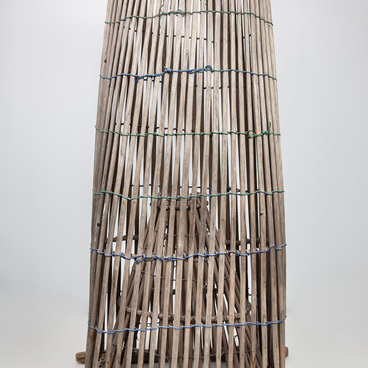Since ancient time, every place inside a Nenets house (chum) has had its own purpose. In the center, there is a sacred pole, which the Nenets call “simzy”. Behind it is a sacred place called “si” — only the older men of the family are allowed to enter that area. In the si there is a sacred chest with idols inside — the patrons of the family and the hearth. Only men had the right to touch them, perform rituals and pass them on as heirlooms.
The Nenets believed that the world around them was filled with spirits that accompanied people everywhere. They could cause disease and bring bad luck, or they could help in hunting and fishing. The Nenets worshiped their gods in special sanctuaries, and the shaman was their guide to the spirit world. The Nenets called domestic idols “myadkhehe” — these were small stones or wooden figurines resembling a person or an animal. Idols were dressed in Nenets fur or cloth costumes. The costumes could be for men or women, and often several of them were put on one figurine, one on top of the other. Each new outfit was sewn in gratitude to the idol for the assistance it provided.
The purpose of the doll was associated with the concept of “mother Earth” and the names “Den kata”, the earthly grandmother, and “Mint pusha”, the hostess of the chum. The doll grew in size every time, when it was given a new piece of chintz fabric as a sign of gratitude. The fabric was wrapped around the body, and by counting the pieces of fabric it was possible to say how many times the idol had helped people. Instead of a face, the doll would have a copper plaque; a hat was sewn on top, and shoes, pima, were put on the feet.
After the death of the eldest woman, the “hostess of the chum” was inherited by the next oldest relative. Household spirits were inseparably connected with the life stages of the Forest Nenets: birth, marriage and death. There were many mythological images that enriched the spiritual world of the northern tribes.
The Nenets believed that the world around them was filled with spirits that accompanied people everywhere. They could cause disease and bring bad luck, or they could help in hunting and fishing. The Nenets worshiped their gods in special sanctuaries, and the shaman was their guide to the spirit world. The Nenets called domestic idols “myadkhehe” — these were small stones or wooden figurines resembling a person or an animal. Idols were dressed in Nenets fur or cloth costumes. The costumes could be for men or women, and often several of them were put on one figurine, one on top of the other. Each new outfit was sewn in gratitude to the idol for the assistance it provided.
There were tribal, family and personal Nenets idols, and all of them were offered sacrifices. The Nenets especially revered the patroness of the family Myad-puhutsya, whose name is translated as “the mistress of the chum” or “an old woman”. She was the spirit of women, childbirth and motherhood, the only household idol that women were allowed to touch. The doll belonged to the eldest woman in the family, who kept the idol at the head of her bed.
The purpose of the doll was associated with the concept of “mother Earth” and the names “Den kata”, the earthly grandmother, and “Mint pusha”, the hostess of the chum. The doll grew in size every time, when it was given a new piece of chintz fabric as a sign of gratitude. The fabric was wrapped around the body, and by counting the pieces of fabric it was possible to say how many times the idol had helped people. Instead of a face, the doll would have a copper plaque; a hat was sewn on top, and shoes, pima, were put on the feet.
After the death of the eldest woman, the “hostess of the chum” was inherited by the next oldest relative. Household spirits were inseparably connected with the life stages of the Forest Nenets: birth, marriage and death. There were many mythological images that enriched the spiritual world of the northern tribes.





